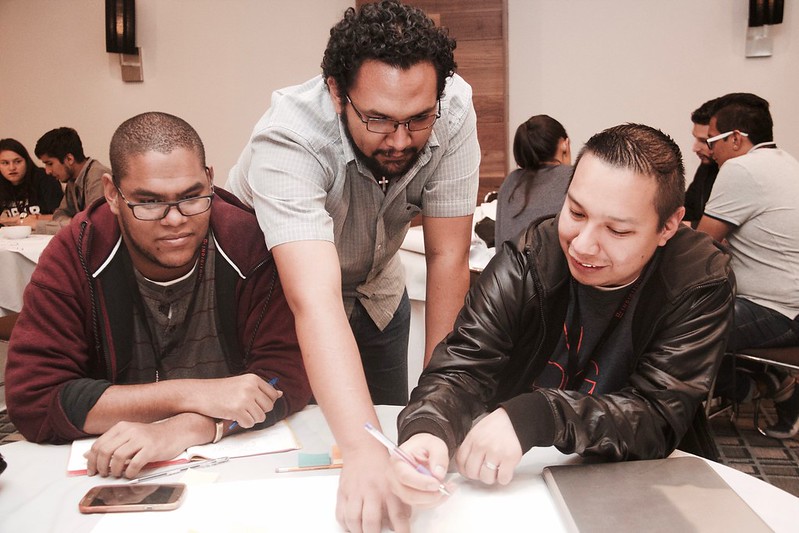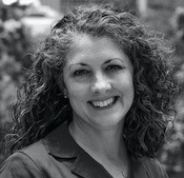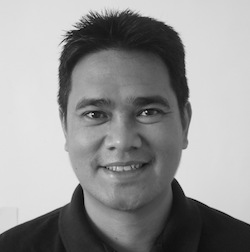
Cheryl Boyd
Global Vice President, Digital Strategies

When I think about the complexities of leading our organization at the national level, I immediately remember a particular season when I was leading SLM nationally. Our country was in the midst of constant leadership transition. Within about five years, we had four different national SLM leaders. The government was hostile to our presence and work. Resources were meager. We had to consolidate our staff in order to create healthier teams, which meant asking staff to move and reducing the number of cities we were in by about half. While we were seeing some students trust Christ and grow in their faith, most students would not agree to a second meeting with us.
It was in this season that a well-meaning leader above us asked us to share how many campuses in our country we had not yet reached and what our plan was for reaching them. I was not mentally or emotionally prepared to answer this reasonable question. It already felt like I was trying to climb a steep mountain in roller skates. That question made the mountain seem taller and suddenly covered with ice!
I am sure you have been there. As leaders, we lead through complexity. I asked AI to help me identify key complex factors for national DS leaders. Here are the results:
1. Navigating Organizational Complexity
You must engage with layers of organizational structure—local, national, regional, and global—while also collaborating across strategy and capacity. This requires relational and intercultural intelligence, clarity of communication, and the ability to lead through ambiguity and change.
Many national ministries are still developing digital maturity. You often face limitations in staff, funding, infrastructure, and training. Cultivating strong DS teams, instilling digital culture, integrating tools (e.g., analytics dashboards, WordPress, Metricool, Gnowbe), and aligning with governance expectations adds pressure, especially in lower-resourced contexts.
You are tasked with reaching a wide variety of persona—from "Hostile" to "Growing"—as defined in the Audience Map. Each segment requires contextualized content, tone, and channels. The constant change in digital behaviors adds to the challenge of staying relevant and effective.
You are expected to lead spiritual movements in volatile, uncertain, complex, and ambiguous (VUCA) environments. Economic, political, and cultural instability complicate long-term planning, local sustainability, and implementation of global strategies.
Innovation is necessary for missional growth, especially in digital spaces and unreached audiences. Yet DS leaders must also follow governance standards, protect data security, and coordinate with broader Campus Crusade for Christ International frameworks. This tension between flexibility and control is a persistent complexity.
A recurring challenge is helping other leaders understand the value-add of Digital Strategies. Without clear communication and integration into national goals, DS leaders may feel siloed or undervalued, making strategic engagement harder.
Do those things sound familiar to your situation? Don’t hyperventilate. Take a few deep breaths. Remember your spiritual breathing. This is God’s mission. He has called you to lead for such a time as this. He is with you.
God Meets You in the Complexity
If I could go back and coach myself through that stressful and discouraging season, I would remind myself of the same things. Breathe. Remember I Thessalonians 5:24: “The one who calls you is faithful, and He will do it.” You cannot control the complexity, but God has given you everything you need to lead through it. Surrendering to Him and abiding with Him minute by minute will lead to fruitfulness.
Whatever challenges you face, I am sure that others in the GDS network are facing similar challenges. Our WhatsApp channel and Workplace Group (soon to be on Workvivo) are great places to share and learn together.
You are not alone. Keep reading to hear from other leaders in our network as they share how they navigate the complexities of leading the mission using DS.
Together with you,
Cheryl
Liz Andreasen
Director of Internal Products, Global Digital Strategies

When I was 14 years old, I had my first “big city” experience by traveling with a school group to New York City. I remember trailing behind my teachers through the crowded streets, wide-eyed and overwhelmed, but not really worried. I didn’t know where we were going, but it didn’t matter. Someone else was leading, and I simply trusted them to get us there.
Fast forward a few years, and I found myself standing alone in a metro station in Berlin. I stared at the map—this wild tangle of colored lines crossing and looping like a plate of noodles, and I realized no one was coming to lead me. It was up to me to figure it out.
This experience taught me something important: In both New York and Berlin, complexity is always present. But when someone else is leading, I don’t have to face it. However, leadership requires that we see complexity, engage with it, and navigate through it intentionally.
In our digital ministry, we’re not leading people on a physical metro journey, but we are leading them through spiritual landscapes that are equally complex. The faith journeys around us do not follow straight lines. They loop, stall, accelerate, and sometimes seem to backtrack. People bring a lifetime of different experiences, cultures, questions, doubts, and hopes with them. As leaders, we can’t afford to pretend that these journeys are simple.
Instead, we must lead in a way that reflects the complex reality around us. We must remember that people are arriving from all kinds of starting points and may need different paths forward. Just as a metro map doesn’t suggest only one “correct” route, our leadership and strategy must offer multiple ways for individuals to engage, explore, and move toward growth.
But here’s the beautiful thing: leaning into complexity doesn’t just grow the people we serve. It grows us, too. By the end of my time in Berlin, that chaotic-looking metro map had become a symbol of confidence. It helped me understand the city’s rhythm, recognize connections I couldn’t see before, and ultimately navigate with purpose. Likewise, when we lean into the complexity of leading others in faith, we become better leaders who are more patient, more perceptive, and more aware of how diverse journeys can all point toward Christ.
Leading through complexity isn’t something to avoid. It’s a gift that strengthens us, deepening our understanding of the world around us and the people God has called us to serve.
Jomer Gallana
National Team Leader, Cru Philippines

Leading Digital Strategies was not just about launching initiatives—it was about growing through complexity and leading change. Looking back, it was the perfect training ground for stepping into the larger, more complex role of National Team Leader (NTL).
One principle that shaped me early was agility—launching even when only 70% sure, and learning as we go. I learned early that “action breeds clarity,” and adapting along the way became a rhythm we embraced.
Understanding VUCA—volatility, uncertainty, complexity, and ambiguity—also shifted my mindset. Change is not the enemy. As leaders, we can’t always control the environment, but we can learn to move through it with resilience and clarity.
Leading up became critical. I realized that introducing change requires more than good ideas. It demands relational leadership, onboarding people, and helping them process change thoughtfully.
We continued to push for innovation, reminding ourselves that Digital Strategies is about making disciples, not about chasing the latest app or trend. Staying audience-centric was vital: understanding people's real needs and helping them take their next best step toward Christ.
Two other anchors emerged: volunteerism and shared leadership. Building a team culture where everyone felt empowered, trusted, and valued allowed us to create lasting momentum beyond just staff-led efforts. The GDS team also helped model for us how people with the same passion and the right posture can work together to greatly increase our reach. Seeing it lived out globally encouraged us to build environments of trust, collaboration, and innovation locally as well.
Critical Events That Shaped My Leadership Growth
Several key events stretched and sharpened these principles.
In 2014, we launched the Digital Day of Outreach without a clear blueprint. It was a bold step into the unknown, teaching us to try, learn, and iterate.
By 2018, we were driving the "Think Digital" campaign across all ministry areas—urging teams to integrate digital thinking into everything they did. This shifted perceptions: digital was no longer just about creating materials; it became a strategic field strategy for multiplication.
By 2019, we ramped up partnership training across denominations and churches. In 2022, we launched the Digital Missions Launchpad, and it helped open new territory, challenging us to learn new platforms and rethink scalability. It taught us that a massive impact couldn't rely solely on staff effort; volunteers and partnerships were essential.
Indigitous inspired us with the model of entrusting ministry to reliable, available people, multiplying our reach far beyond what we could do alone. #HACK, Indigitous Meet-ups, and sponsored events played a critical role in empowering and championing digital missions in our country.
Within our own team, shared leadership became a daily practice. We saw ourselves as equals, all committed to creatively accelerating the Great Commission. Trust, quick feedback, and flexibility allowed us to be agile and innovative. Volunteers who joined us often had no prior discipleship experience, but with the right equipping, they grew alongside us.
Leading in DS showed me that complexity isn’t something to fear—it’s something to lead through. The lessons of agility, resilience, collaboration, and innovation shaped my leadership DNA, preparing me to serve at the national level.
Complexity will always be part of leadership, but by God's grace, it can also be the place where we grow the most.

Eunice Nartey
Digital Strategies Director, Great Commission Movement of Ghana

Balancing multiple roles is an ongoing challenge. Over the years, I have identified six key practices that help me stay productive. These principles enable me to navigate my responsibilities as Digital Strategies Director of the Great Commission Movement of Ghana, Technology Transfer Officer for the University of Cape Coast, wife, mother, Sunday school teacher, friend, mentor, and digital evangelist.
1. Depend on God.
My dependence on God is at the core of my ability to manage multiple roles. It helps a great deal to keep whispering to the Holy Spirit in consultative discussions for every decision. Your strength and confidence will outshine your weaknesses and insecurities after a beautiful time of worship early in the morning when you have declared the Word into exactly how your day should go. As God keeps telling us, He is more interested in our relationship with Him than in our work for Him. We can completely trust Him to do what He wants with us and still have our best interests at heart.
2. When everything seems urgent, set priorities.
With so many responsibilities, it is crucial to determine what matters most at any given time. Prioritization helps me focus on what is urgent versus what is essential, ensuring that I give my best to the right things. It helps for me to have two lists daily: “must be done’ and ‘may be done.” The “must be done” is the list of activities whose deadlines have already arrived or passed and are essential for your next steps. “May be dones” are not so pressing and may be carried over to subsequent days if time does not allow them to be done on the first day.
3. Be creative.
Creativity is not just for artists but also for leadership and problem-solving. Finding innovative ways to approach challenges, delegate, and streamline processes helps maximize my impact in all my roles. Recently, I faced quite a tough challenge of settling on a time suitable for all the DS leaders in Ghana to meet. Eventually, I had to decide on dividing the team into two groups according to the time people were available. It meant devoting more time to the task, but it was temporary; it helped get the job done, and it was creative!
4. Have me-time.
This sounds impossible at first. But I have learned that you can focus on yourself even in the chaos of the kids tearing your hall apart. Decide to ignore the mess and enjoy some peace in your mind. Playing tennis on weekends and taking walks early in the morning help me to enjoy being just me for a little while. Taking time for myself allows me to recharge and be fully present for my family, work, and ministry. Whether reading, exercising, or sitting silently, me-time is non-negotiable.
5. Choose something you love for your role.
The words Digital and Intellectual Property send adrenaline spikes through my body. And when whatever relates to these words allows me to share the love of Christ and shed light on hidden value, I can’t help but get involved. Loving what I do makes the workload lighter. When passion fuels work, staying motivated even in challenging seasons becomes easier. Purpose-driven work brings fulfillment and resilience.
6. Identify your support systems and engage them.
CCCI taught me to receive help for real personal issues, even when I was not seeking it. Getting that help taught me to actively search for help whenever I needed it. Thanks to the wonderful CCCI family, I have a network of people willing to support and offer guidance in whichever way possible. You don’t need to bear your struggles alone, whether in your relationship, health, finances, or ministry. Find your support systems and engage them.
Leading in complexity has challenges, but these six practices have helped me stay grounded and effective. I hope sharing my experiences encourages you as you navigate your roles. We may not always have it all figured out, but with God to depend on and all the things He has given us (1 Corinthians 3:21), we can continue to make Jesus and His mission available to anyone, anywhere, anytime they want to be part of it.

©1994-2022 Cru. All Rights Reserved.